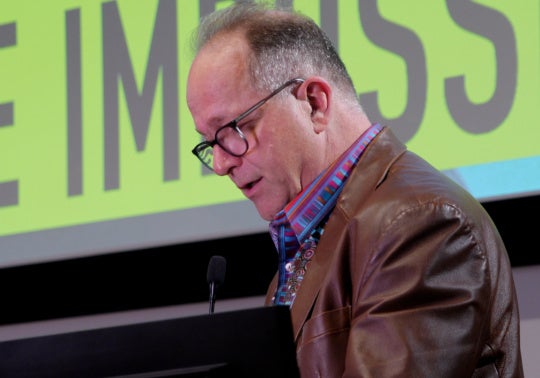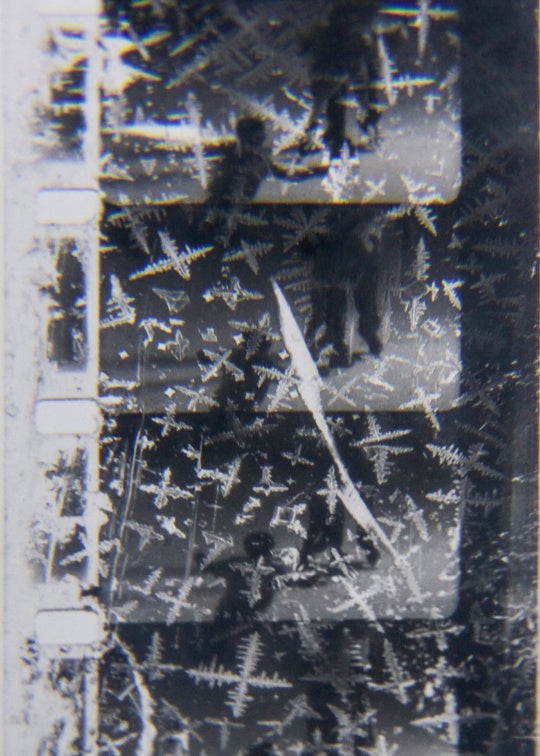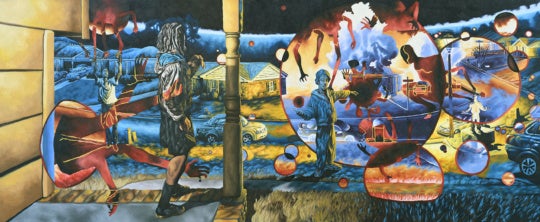
Among the numerous art venues and gallery spaces located in and around Atlanta, the David J. Sencer CDC Museum is a bit of an anomaly. Although the organization (which was formerly known as the Global Health Odyssey Museum) has always maintained that its mission is “to educate visitors about the value of public health” and to present “the rich heritage and vast accomplishments of CDC,” its exhibitions often reflect remarkably diverse perspectives, incorporating history, geography, culture, and art. And that is certainly the case with its current show, “Resettling in America: Georgia’s Refugee Communities.”
The exhibition couldn’t be more timely; it opened in July, just before the refugee crisis in Europe made international headlines. It also serves as a perfect counterpoint to media stories that fan the flames of fear and anxiety concerning migrants: “Resettling in America” chooses to focus on the benefits of assimilation and integration into American society and, more specifically, the state of Georgia.

Ranked in the top six states for refugee resettlement, Georgia hosts an average of 2,208 refugees for resettlement per year, and “Resettling in America” demonstrates the rich cultural diversity that emerges from this assimilation through businesses, farming, fashion, food, music, and art. While Savannah, Macon, and Gainesville actively support refugee communities, Atlanta and its surrounding counties and towns represent the state’s largest resettlement area, with Clarkston as a major destination for new arrivals.
One of the most striking aspects of the show is the large-format photographs that vividly document local refugee communities, featuring the work of such Atlanta-based photographers as Reggie Erawoc, Beate Sass, Alex D. Rogers, Michael Uhr, and Bryan Meltz. The color photographs, in particular, capture the details of daily life and the residents’ attire in bold, striking compositions, such as Uhr’s portraits of Hawa A. Kahin and Hussein Galib. Kahin, who sells traditional clothing in her store L.A. Fashion in Clarkston’s Somali Plaza, is pictured amid a rainbow-hued array of merchandise, while Galib strikes an inquisitive pose against the eclectic surplus of the Dalmar Market, which specializes in Ethiopian foods and goods.

Other highlights include Sass’s lush depictions of local farming initiatives, such as the work being done through the nonprofit Global Growers. In one photograph, a Burmese farmer and his son pose with their tools on their verdant garden plot at Decatur’s Kitchen Garden. In another, a Burundi woman harvests carrots for the Decatur Farmers Market in a dazzling palette of blue, orange, green, black and brown.
The black-and-white portraits also command your attention with photos of refugee children by Meltz and of CDC employees by Rogers, including the soulful visage of Haji Munye Shamun, who was forced to flee Somalia in 1991 after civil war erupted. The subjects in these photos stare directly into the camera, evoking a range of emotions in intimate compositions that share similarities with the work of Jean Mohr, whose exhibition “War From the Victims’ Perspective” was featured at the Carter Center last spring.
In addition to photographic documentation, “Resettling in America” includes documentary video installations, maps, flow charts, historical overviews, and a timeline of refugee resettlement in the U.S., beginning with the Displaced Persons Act of 1948. But the additional items that really stood out for me were selected items from local craftsmen and paintings and drawings created by young refugee girls.

Among these are a stunning makeko mat made from ashindi (a reed native to Somalia) and woven by Somali Bantu women, a hand-painted chair that would have pleased visionary artist Howard Finster, and several intricate, beautifully rendered baskets made of kudzu and wisteria vines from Bhutan artist Bhagirath “Bhagi” Dungel.
The artwork by young refugee girls spotlights selections from the exhibition, “One Girl, Two Worlds, ” sponsored by the Young Women’s Leadership Program (YWLP), and offers an enticing display of budding artistic styles that run the gamut from subtle color tonality (an autumnal landscape by Nasrin) to eye-popping Expressionism (a Day-Glow mixed media piece by Esther).
“Resettling in America: Georgia’s Refugee Communities” runs through December 31 and is particularly suited to family and school group viewings with its thoughtful, informed curation that places refugee resettlement in an accessible, non-threatening context. It also seems a fitting exhibition to view during the holiday season, as it demonstrates the positive power of both giving and receiving, and the ways in which Georgia and the resettlement communities mutually benefit.
“Resettling in America: Georgia’s Refugee Communities” is at the David J. Sencer CDC Museum through December 31.
Jeff Stafford writes about art, film, music, gardening and other favorite topics for various digital publications.




